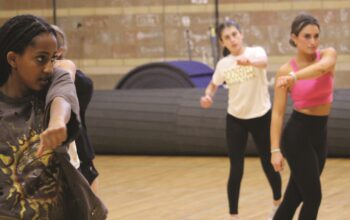
Sailboats on the water of Shilshole Bay, pictured above
Hundreds show up to Roosevelt football and soccer games, week after week. However, some sports that are relatively out of the public eye still captivate many. The world of niche sports is one squirreled away, but full of ambitious and skilled people with their own interesting stories.
Mountain Biking
While mountain biking is not an official Roosevelt sport, it maintains “nearly 40 million participants annually” in the U.S. according to the International Mountain Biking Association, with the sport being popular among thrill seeking cyclists since the 1970’s. But why are so many people interested in mountain biking?
To answer this question, I asked sophomore Yari Rasmussan, a student at Roosevelt High School and mountain biker, who says “There’s an amazing community of riders out there.” Rasmussan states that the culture is one where, “most people, if they see you do something, even if it’s not that impressive, we’ll cheer you on, because they know how much it means to you.”
Rasmussan continues to say that mountain biking is “a great way to take your mind off things” and “takes you to the most beautiful places.” These include mountain views and forest trails, giving participants a great way to see the world and have fun, while still being part of an amazing community.
Sailing
Worldwide, sailing is a prominent sport, having appeared at the summer Olympics since 1900. According to the Columbia Electronic Encyclopedia, the first recorded instance of an organized race took place in the mid 1600’s in the Netherlands.
The sport appears in many forms, with competitive racing taking place in boats anywhere from eight foot long dinghies to 125 foot keelboats.
Yet many still wonder: how does one ‘win’ in sailing? Junior Danny Juan, a member of the Roosevelt sailing team, defines success in sailing as being the one to “cross the finish line first.” Juan states that the goal of the sport is to “be fast.”
Juan explains how sailing is like a track race, where “there’s a start and there’s a finish;” you just have to be faster than the other boats.
Juan also continues to say that sailing is a “rich sport with a lot of history”—one example being that the existence of the oldest international sporting trophy is the America’s Cup trophy from 1851, awarded to the crew of the schooner America after besting 14 other boats in a race around England’s Isle of Wight.
While sailing has a great past, filled with historic moments, it also has its future in the hands of those that compete today. Currently, Juan puts the number of youth competitors at around 300 in the Pacific Northwest, and he encourages anyone to “join the sailing club!”
Bowling
Bowling is a sport that many have tried, but few have mastered. According to the International Bowling Museum, bowling has a rich history dating back to 3200 B.C. in Egypt, later becoming a popular sport during the reign of King Henry the VIII in England.
It has been outlawed in many states and countries for various reasons, some being related to the prohibition of gambling and the distraction of soldiers. Standardized in 1914, bowling evolved to look as it is played today.
Recently, a Women’s Bowling Team was formed at Roosevelt, a group that competes through the winter against teams from high schools all over Seattle. Claire Bricknell, a senior at Roosevelt and member of the bowling team, describes the team as a “very inclusive and positive environment.”
The team has already played against its first opponent this season, the Holy Names team, dubbed the “Holy Rollers,” and are set to face off against many more throughout the season.
Bricknell states that there is “a surprisingly large amount of competition.” With many teams and almost a full season to go, there is bound to be excitement and fun to be had. The team is sure to strike it big and bowl over their competition.
These three examples of sports only scratch the surface of those that exist within Roosevelt. Worldwide, there are over 200 sports that have national or international federations, and over 8,000 more that do not. And while they may lack publicity, one thing remains universal across most athletic teams: a shared sense of spirit and community.



